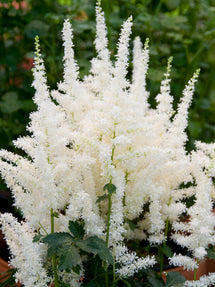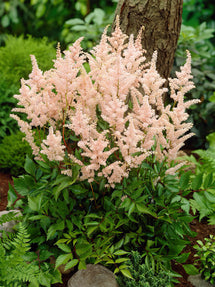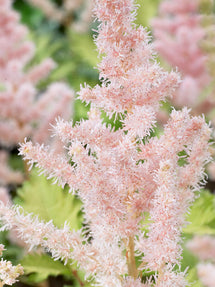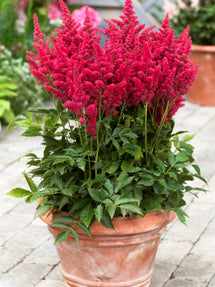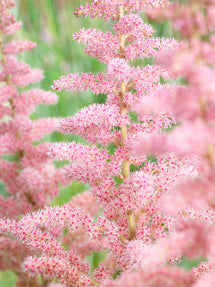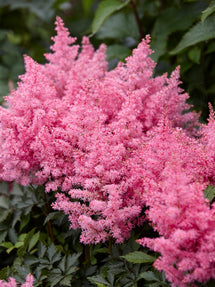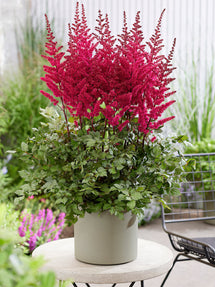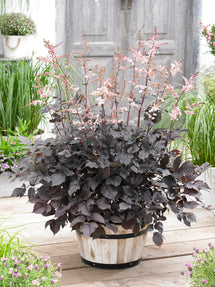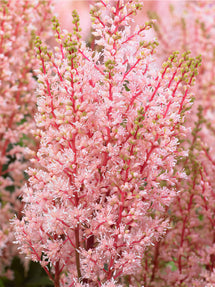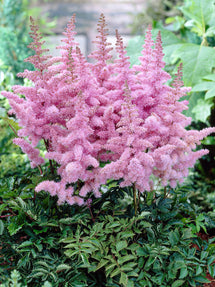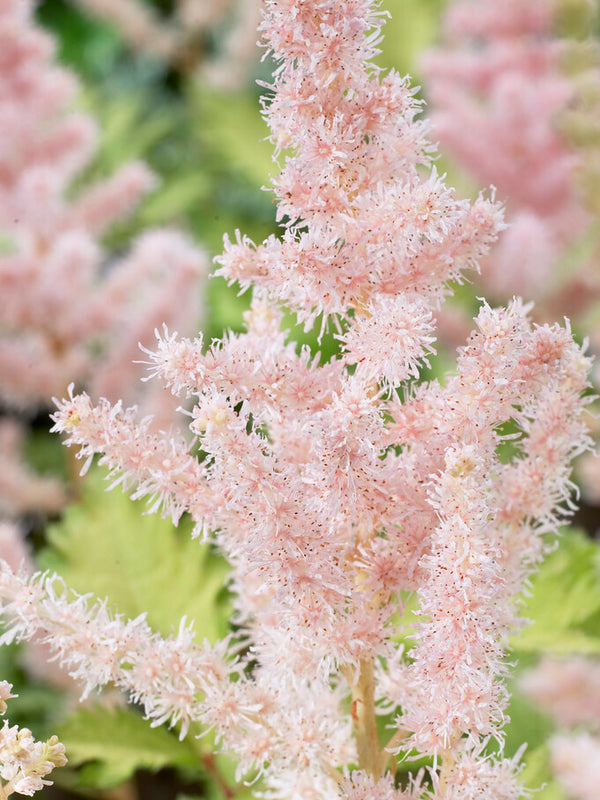Astilbes
Brighten Up Your Shade Garden With Low-Maintenance Astilbes
Whether you want to add color to your garden's darker areas or fill a space with lush, vibrant blooms, Astilbes are the perfect addition to US gardens. Their densely packed, showy flowers come in a variety of hues that create a striking contrast against their dark green foliage. Their long-lasting blooms that brighten your garden throughout the summer, providing consistent color and visual interest.
Discover our collection of premium Astilbes and bring beauty to your garden.
Showing 1 - 10 in 10 items
Astilbe Roots | Shop Unique Astilbe Varieties - DutchGrown
Astilbe Varieties: Fluffy Flower Spikes That Appear In Different Hues
Astilbes, also known as “False Spirea”, “False Goat's Beard”, and “Feather Flower”, are truly standouts in gardens. Thanks to their unique, feathery plumes, they bring a soft, airy feel to several garden designs, ranging from cottage to woodland gardens. The feathery plumes extend above the fern-like foliage, creating a striking contrast. Depending on the variety, the flowers bloom during early summer, mid-summer or late summer and have a compact growth habit.
One of the most attractive features of Astilbes is their wide variety of colors. You’ll find everything from pale white and bright pink flowers to vibrant purple and red blooms. This allows you to easily design your garden with beautiful flower colors. Varieties like the Astilbe “Look At Me” feature bold pink flower spikes, while the Astilbe “Close Harmony” offers soft white blooms, that are perfect for mixing and matching in your flower beds.
Astilbes are popular not only due to their appearance. These shade-loving plants require minimal care and can withstand extremely low temperatures, eliminating the need for frost protection in the winter. These resilient plants can be conveniently planted directly outdoors in the (early) spring, making gardening a breeze.
Astilbe Plants: A Bright And Showy Pollinator Attractor
Astilbes are a beautiful addition to any garden. But that's not all they have to offer. They also play an important role in supporting pollinators. Their fluffy blooms attract bees, butterflies, and other pollinators, providing them with a steady source of nectar throughout the growing season. Astilbes are deer-resistant and have a pleasant scent.
These versatile plants are perfect for various garden settings. Whether you plant them in borders, garden beds, or pots, they will thrive with the right circumstances. Be sure to plant them in partially or fully shaded areas of your garden. Astilbes also make excellent cut flowers, allowing you to enjoy their beauty indoors.
How To Grow Astilbe Flowers For Maximum Effect In Your Garden
Astilbes are an excellent choice for adding visual drama to your shady garden, with bright blooms at their peak and soft shades as they fade. To achieve the best results, it is important to follow the growing instructions.
Astilbe blooms in the summer, so you should start planting in the early to late spring when the soil is workable. Soak the Astilbe’s bare roots in water for 3 to 6 hours before planting. Next, choose a spot with partial shade. Although they can grow in full shade, partial shade produces the best blooms. Make sure the soil is loose and well-drained. Adding compost and mulch helps retain moisture and suppress weeds. In containers, plant them in loam-based or multipurpose compost.
Loosen the soil to a depth of 12 inches, then plant your Astilbe root ball with the crown just below the soil line. Space the plants 18 to 24 inches apart to allow proper air circulation. Next, water consistently, at least once a week, until the roots are well-established. Make sure the soil stays consistently moist without becoming soggy. Remove spent flowers after they have finished blooming. In the fall, cut the stems back to about 1 inch above soil level.
With patience and proper care, you can enjoy beautiful Astilbe flowers in the summer. Do you need more help? Follow our growing guide “How to Grow Astilbe” for more information.
Premium Astilbes For Sale At DutchGrown
At DutchGrown, we offer unique Astilbe bare roots that stand out for their exceptional size. With decades of experience sourcing the highest quality bare roots, we carefully select them to ensure they meet our highest standards. Whether you choose the delicate flower Astilbes “Peach Blossom” or the spectacular Astilbe “Volcano”, your garden will look vibrant, refined, and full of life, with stunning blooms that stand out throughout the summer. Explore our selection of premium Astilbes for sale and elevate your garden with the finest plants available. We ship throughout the US.
Frequently Asked Questions About Astilbes
Where Is The Best Place To Plant Astilbe?
Astilbes thrive and produce the most vibrant blooms in partial shade with well-drained soil. While Astilbes can tolerate full shade, they tend to perform better with some indirect sunlight. Avoid planting them in full sun, as this can stress the plant and lead to poor growth or none at all. Astilbe is hardy in USDA zones 4 to 9, making it a reliable choice for a wide range of climates.
Does Astilbe Come Back Every Year?
Astilbes are shade-loving perennials that return yearly when planted in the right conditions. These clump-forming perennials can withstand extremely low temperatures, so there’s no need for frost protection during the winter. As long as they’re planted in well-drained soil and receive proper care, you can enjoy their vibrant flowers during the blooming period.
How Long Do Astilbe Bloom?
Under the right conditions and with proper care, Astilbes typically bloom for two to three weeks. Their plume-like flowers and glossy foliage provide a beautiful display for a long bloom period during the summer months. To ensure the longest possible bloom time, plant them in well-drained, moist soil and in a location with partial shade. With proper care, Astilbes will deliver stunning, colorful plumes for several weeks.
Do Astilbes Like Sun Or Shade?
Astilbes thrive in partial shade, where they receive indirect sunlight while being protected from the harsh afternoon sun. While they can tolerate deep shade, they may not bloom as vibrantly in those conditions. Avoid placing them in full sun, as this can cause them to dry out and struggle to grow.
